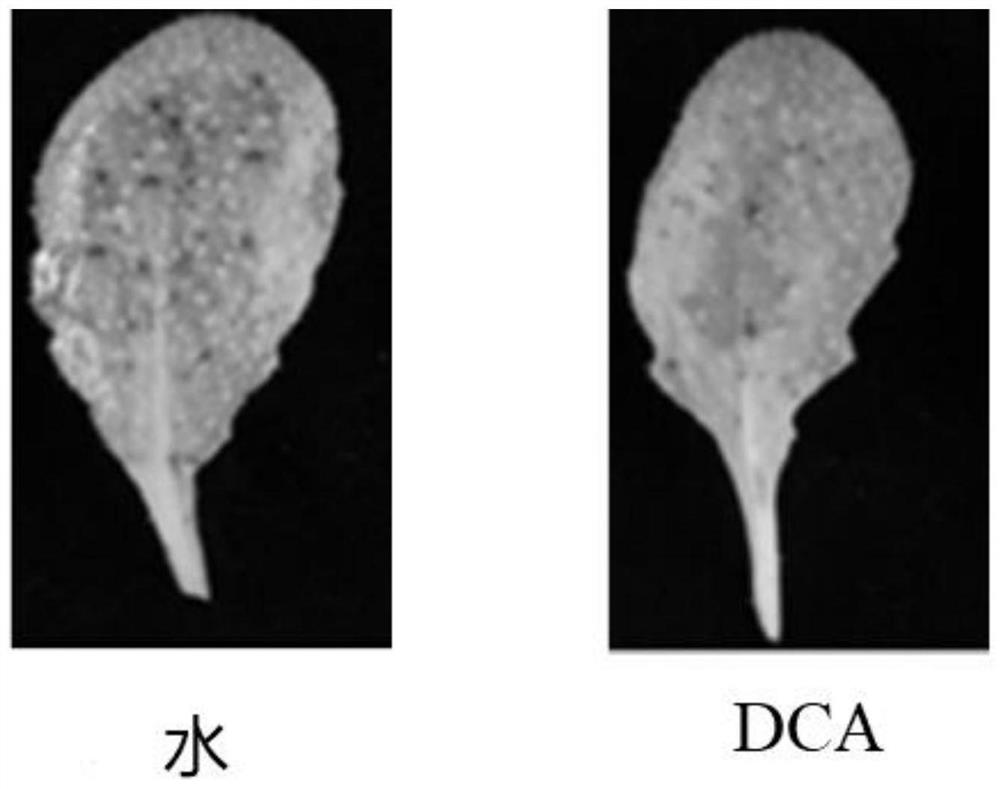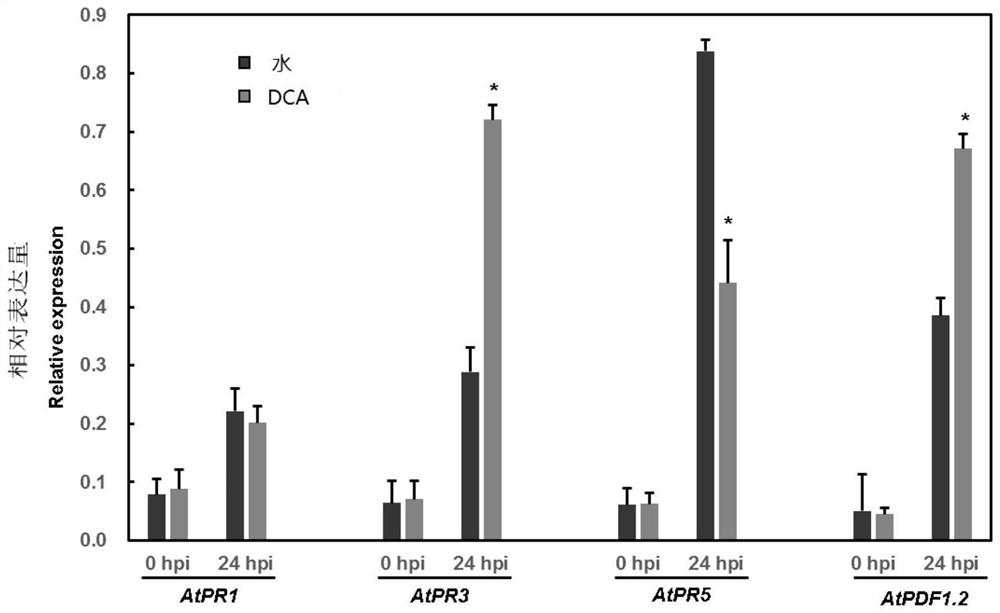Application of 3,5-dichloroanthranilic acid to induce Arabidopsis resistance to Botrytis cinerea and its method
An anthranilic acid and Arabidopsis technology, which is applied in the field of compound inducing plant resistance, can solve the problems of poor water solubility of the inducer, high cost of Botrytis cinerea, and pollute the environment, so as to achieve no secondary pollution, improve resistance, good water solubility
- Summary
- Abstract
- Description
- Claims
- Application Information
AI Technical Summary
Problems solved by technology
Method used
Image
Examples
Embodiment 1
[0037]Example 1: Cultivation of Arabidopsis thaliana plants
[0038] The seeds of wild-type Arabidopsis (Col-0) were suspended in 0.1% agarose solution, vernalized at low temperature at 4 °C for 2-4 days, sown in mixed nutrient soils (vermiculite: grass and wood ash: perlite = 6:2:1), fertilized, diluted with water according to mass volume ratio l: 1000, coated for 2-3 days to facilitate seedling emergence. The incubation temperature is maintained at 22-24 °C, the relative humidity is 80%, and the light intensity is about 85 μmol·s -1 ·m -2 , the light time is 16 hours. Other water, pest and cultivation management are routine. 4-week-old Arabidopsis plants were used for experimental treatment.
Embodiment 2
[0039] Example II: Treatment of 3,5-dichloro-o-aminobenzoic acid
[0040] Configure 10 μM of aqueous 3,5-dichloro-o-aminobenzoic acid. Irrigated Arabidopsis plants were treated with an aqueous solution of 10 μM of 3,5-dichloro-o-aminobenzoic acid. Irrigated Arabidopsis plants with the same volume of water as a control group, after 2 days, inoculation of gray molds was carried out.
Embodiment 3
[0041] Example 3: Arabidopsis thaliana treated from Example 2 is inoculated with gray mold
[0042] With 2× V8 solid medium (36% V8 juice, 0.2% CaCO 3 , 2% agar) to cultivate gray mold at a culture temperature of 20-25 °C. After the dish is full of spores, place the hyphal blocks into a resuspension (maltose 4%, tryptone 1%) and vortex vigorously to release the spores, filter out the spores with gauze, and adjust their spore concentrations to 2×10 with a hemocytometer plate 5 Spores / mL. During inoculation, spray the spore suspension evenly onto the inoculated seedlings until most of the leaves are covered with tiny droplets. Inoculate seedlings are placed at 24 °C with a photoperiod of 12 h light / 12 h dark and a light intensity of 200 μE·m -2 S -1 After 4 days of high moisturizing, the onset of the film was observed. The same volume of resuspension was sprayed on Arabidopsis control plants as a control (MOCK).
[0043] If attached Figure 1 As shown, Example THREE pre-treated with ...
PUM
 Login to View More
Login to View More Abstract
Description
Claims
Application Information
 Login to View More
Login to View More - R&D
- Intellectual Property
- Life Sciences
- Materials
- Tech Scout
- Unparalleled Data Quality
- Higher Quality Content
- 60% Fewer Hallucinations
Browse by: Latest US Patents, China's latest patents, Technical Efficacy Thesaurus, Application Domain, Technology Topic, Popular Technical Reports.
© 2025 PatSnap. All rights reserved.Legal|Privacy policy|Modern Slavery Act Transparency Statement|Sitemap|About US| Contact US: help@patsnap.com



